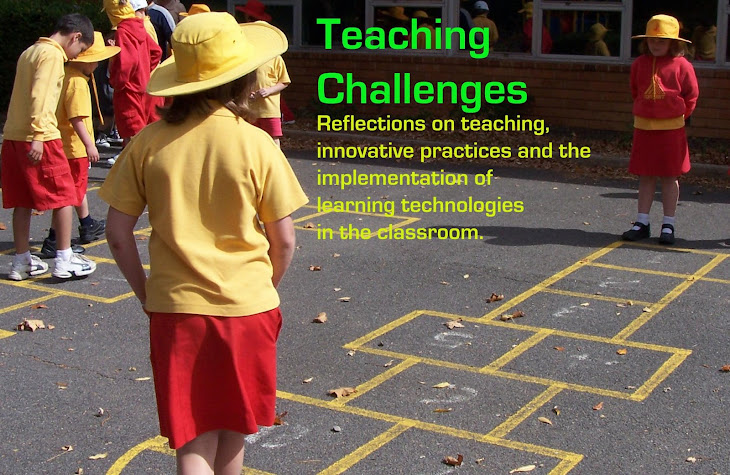I'm not teaching transport anytime soon, but I recently gave some tips to someone who is. So, rather than help just one person, I've decided to share the tips here as well, just in case someone is searching for ideas.
These activities are designed with primary school aged kids in mind (K-6) and generally take a Science/Technology slant.
- If your students are in grade 3 or up, you could consider linking it in with a bike safety unit.
- Have students explore science/technology concepts through tasks -
build a boat using only paper that will carry a 5c piece from one side of sink to other
explore flight and discuss the forces that keep a plane in flight
make those little paper helicopter things - More science/technology projects can be found here.
- This book looks helpful.
- Create a timeline that shows how people built on one another's ideas to make technological advances with transport. How did these changes better meet people's needs? What impact did they have on society?
- For Teachers in Australia: On the 30th March 2009 at 10am the ABC is running a 15 minute program on Boats in a series called "Take on Technology" for Lower Primary.
On the 1st April at 10.55am the ABC is running a 5 minute spot on Charles Kingsford Smith in a series called "Australians" designed for Upper Primary. The ABC is running a whole series about transport on For The Juniors at 10am (15 min slots) on following dates. (Second date is the repeat)
29 Apr 30 Apr Land
6 May 7 May Water
13 May 14 May Air - The website "How Stuff Works" has great explanations of how things work! Here's one on bicycles to get you started: http://www.howstuffworks.com/bicycle3.htm
- The website "How everyday things are made" is absolutely brilliant, but I haven't had much of a chance to use it yet. Amongst other things, they explain how airplanes, motorcycles and cars are made.
- Look at different transport around the world and how this meets particular needs - motorcycles in Vietnam, subways in big cities etc. For thousands of images of transport in a slideshow you can go to http://www.flickr.com/search/show/?q=transport&s=int Just be warned, not all pictures are vehicles as it's based on a search of the word "transport". If you click on "Show info" in top right hand corner, you will find what the photographer has said about the picture.
- You can also find videos on YouTube or TeacherTube that relate to transport. It might be fun to take a pretend ride in a helicopter by watching a video taken from a helicopter. These videos are very easy to download now using kickyoutube. Instructions are here: http://blip.tv/file/1660808/
- You could look into who would visit your school - fire brigade, waste management, subway conductors etc. Or consider visiting a transit museum.
- See if you can set up a tinkering station where students can tinker with bicycle parts, old toy cars, steering wheels or whatever you can get your hands on.
- Buy or borrow "Cut-away" books that allow you to see cut away diagrams of inside different types of transport. Here is one on The Titanic.
- Think about environmental aspects of different forms of transport.
- Students design their own form of transport to meet particular needs (could design without making) perhaps use the SCAMPER framework to help them think through how they can improve existing models.
- Lego makes great technology kits that help children discover about gears, pulleys etc. These may be costly to get set up, but may be worthwhile if your school is looking to enhance their technology resources.
- Fantastic Contraptions is a popular physics game that might tie in. (I don't really get it - was never good at physics!)
- Billy cart building and racing. Toward the end of the unit, see if you can get some parent helpers on board. Look online and find plans and examples of billy carts. Discuss the merits of different types. Design and build one or more billy carts and test them out.
- UPDATE 30/3/09 Check out the Merriam Webster Visual Dictionary Online to interact with some great labeled diagrams of transport related items.








My husband has spent ***HOURS*** playing with the fantastic contraptions software. He is a typical GATE student (gifted & talented ed) and it was really up his alley so to speak. I think teachers will find some students LOVE it (those like my hubby) and others just don't get why you would waste lots of time on it (like me).
ReplyDeleteIt was great to see your link to it. :-)
There's also a handy online resource for teachers of year 6-10 students developed by Transport SA called Carisma. Check out my blog for more info on it.
ReplyDeletecool
ReplyDelete